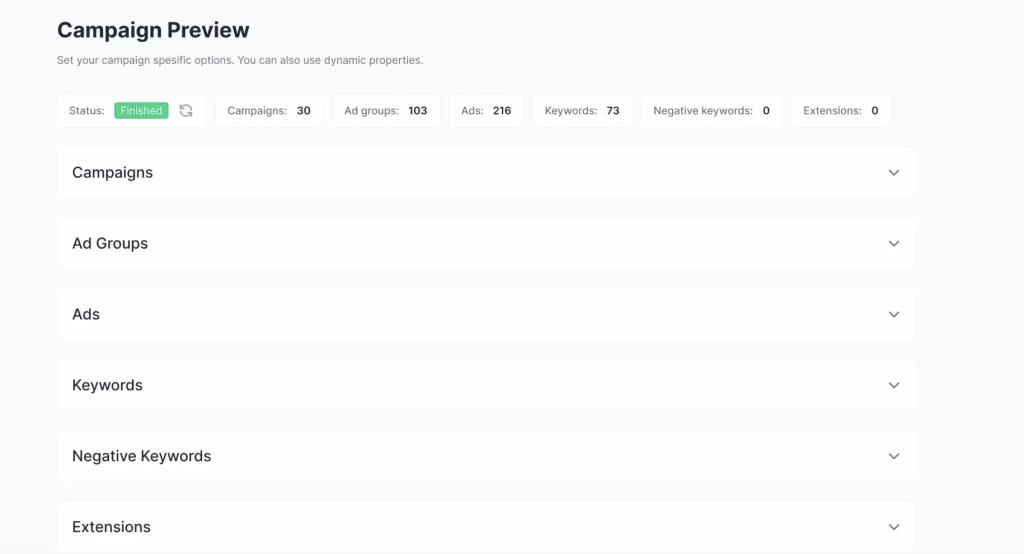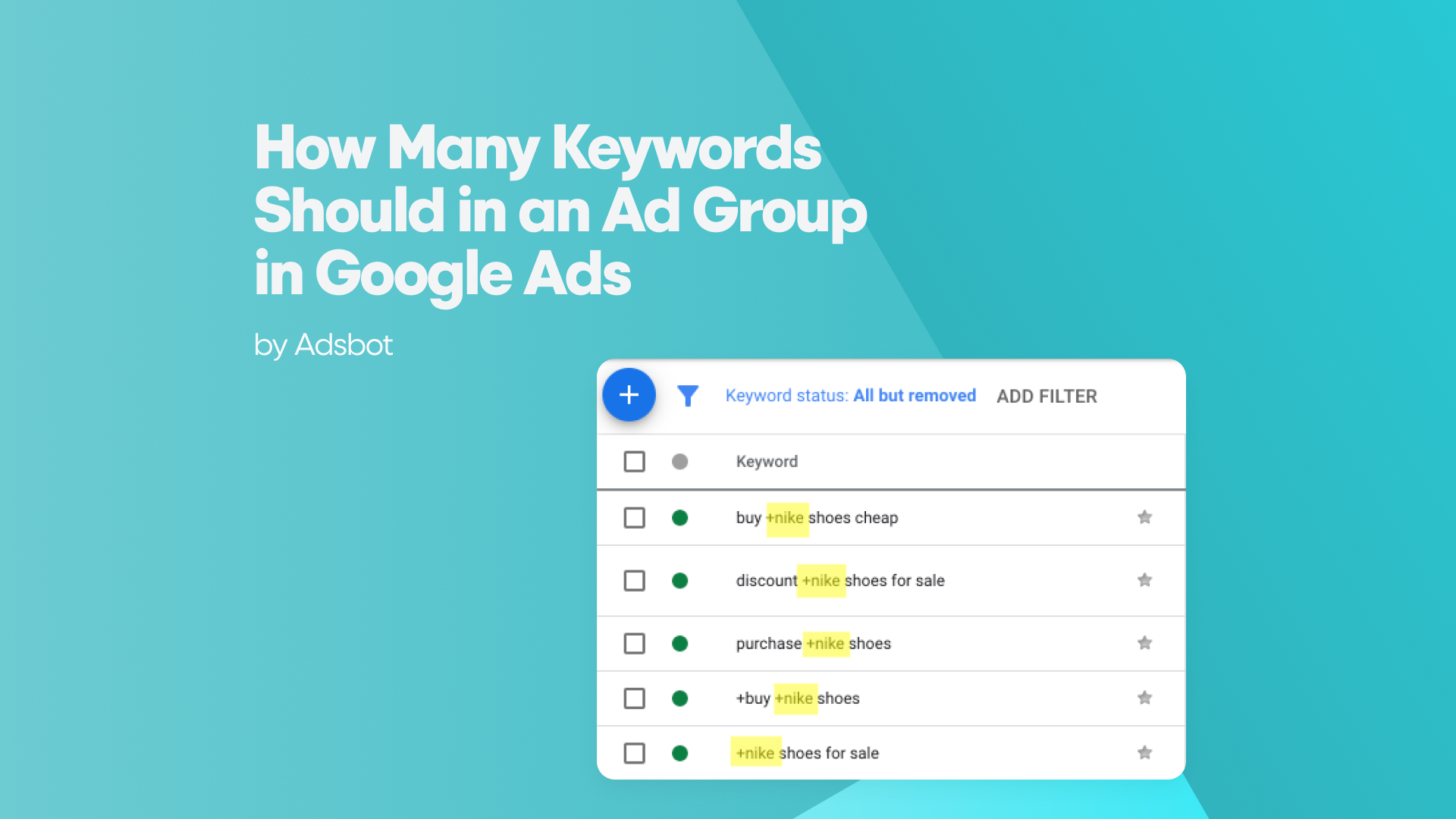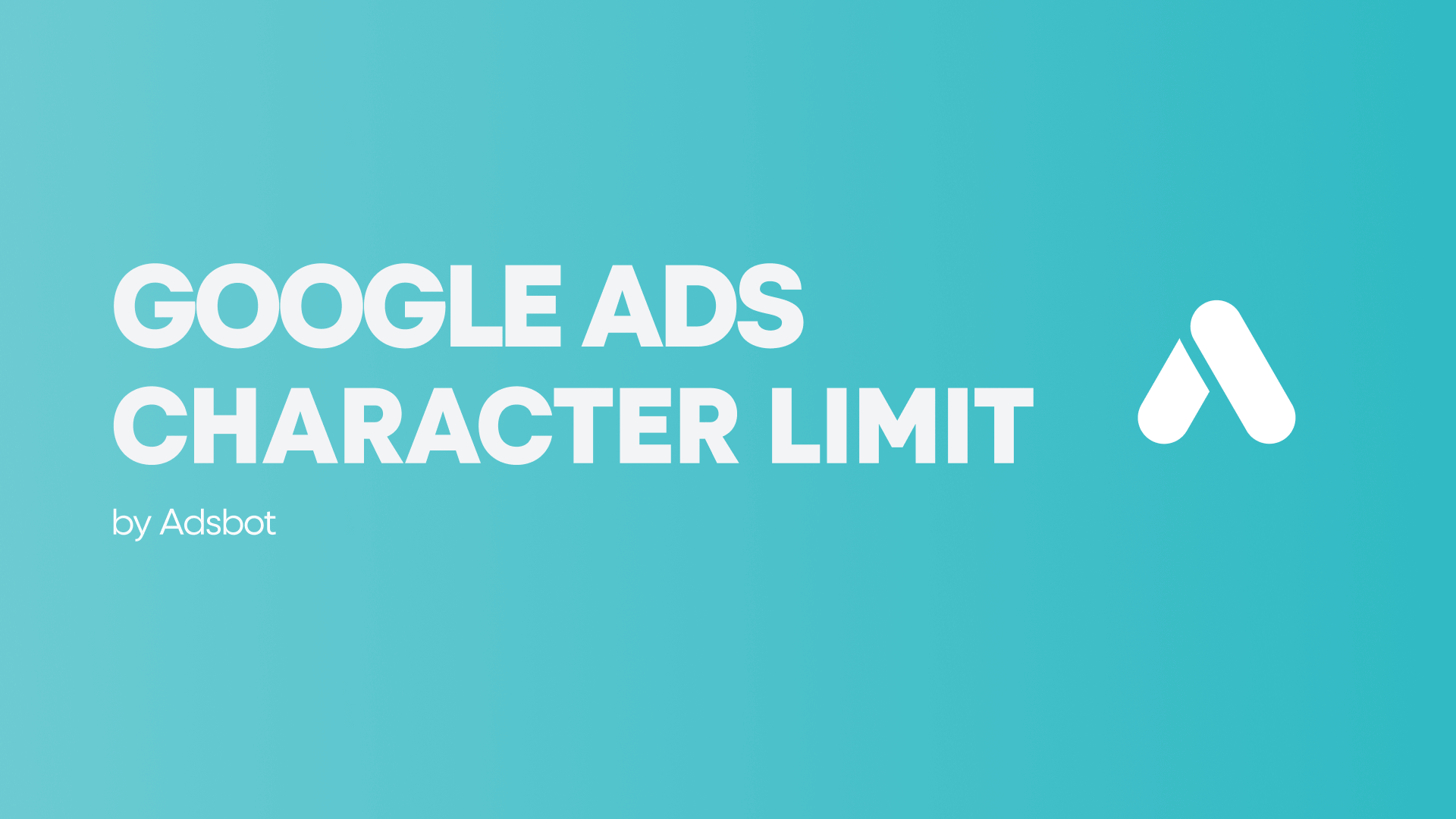Google Ads campaign management is the process of creating, monitoring, and optimizing your Google Ads campaigns to achieve the best possible results for your advertising budget. Here are some steps to effectively manage your Google Ads campaigns:

- Set Clear Advertising Goals: Before you start creating your Google Ads campaigns, it’s important to set clear advertising goals that align with your overall business objectives. Your goals should be specific, measurable, and achievable.
- Conduct Keyword Research: Use the Google Keyword Planner tool to identify relevant keywords for your campaign. Select different types of keywords in Google Ads that are relevant to your business, have high search volume, and low competition. Also, you should add some negative keywords to stay always optimized!
- Create Compelling Ad Copy: Write ad copy that is clear, concise, and compelling. Include your target keywords in your ad copy and use strong call-to-action to encourage users to click on your ads.
- Target the Right Audience: Use audience targeting options to reach the right people with your ads. You can target audiences based on factors such as age, gender, targeting location, interests, and more.
- Set up Conversion Tracking: Conversion tracking allows you to track the actions that users take on your website after clicking on your ads. Set up conversion tracking to measure the effectiveness of your campaigns and optimize your bidding strategy accordingly.
- Monitor Your Campaign Performance: Regularly monitor your campaign performance to identify areas for improvement. Analyze metrics such as click-through rate (CTR), conversion rate, cost per click (CPC), and cost per acquisition (CPA).
- Optimize Your Campaigns: Use the data from your campaign performance to optimize your campaigns. Adjust your bidding strategy, ad copy, targeting, and other elements of your campaigns to improve their effectiveness.
- Continuously Test and Refine: Testing is an important part of campaign management. Continuously test and refine your campaigns to identify what works best for your business.
By following these steps, you can effectively manage your Google Ads campaigns and achieve the best possible results for your advertising budget. It’s important to regularly monitor and optimize your campaigns to ensure that they are effective and aligned with your advertising goals.
After creating your campaigns according to the steps above, you should always continue the campaign management with the following control.
Check Current Google Ad Performance
When managing Google Ads campaigns, it’s important to check current performance in order to identify areas for improvement. By looking at the metrics in the campaign, you can get a better understanding of how your ads are performing and how you can optimize them for better results. For example, by reviewing click-through rates, cost-per-click, and other key metrics, you can gain insights into how to create more effective ads and reach the right audience. Additionally, by researching keywords and audiences for your campaigns, you can make sure that your ads are being shown to the most relevant people. This helps ensure that your ad dollars are being used efficiently and that your campaigns are getting the best possible returns on investment.
Campaign Optimization
Optimizing your Google Ads campaigns is a crucial part of managing them effectively. To start, you need to use data to gain insight into how your campaigns are performing. This includes reviewing current performance metrics such as click-through rates, cost per click, and conversions. You can also use tools like Google Ads Editor to further refine your targeting and optimize your campaigns. Additionally, it’s important to review ad serving settings to ensure you’re optimizing for the right audiences. Finally, be sure to avoid common mistakes such as bidding too high or using unclear ad copy. By following these best practices and using the right data, you can ensure that your campaigns are running efficiently and bringing in maximum ROI.
How Ad Serving Works in Google Ads
Ad serving plays a critical role in the success of a Google Ads campaign. Ad servers enable advertisers to manage the entire scope of their digital marketing efforts in one place, from media planning, ad trafficking, targeting and optimization. Advertisers create their ads with a specific offer and choose a list of keywords to target. Publishers, as the owners of the digital properties on which ads are served, are referred to as the “first-party” in ad serving. Google Ads provides native integrations with other Google products, allowing publishers to manage their campaigns more efficiently and effectively. Advertisers can leverage powerful features such as keyword targeting, bid optimization and audience segmentation to ensure that their campaigns reach the right people at the right time. By properly utilizing ad servers and Google Ads tools, advertisers can create high-ROI marketing campaigns that maximize reach and return on investment.
Google Ads Tools to Help With Campaign Management Tools
Google Ads is a powerful platform for running ad campaigns, but managing multiple campaigns can be daunting. Fortunately, there are several management tools available to help with Google Ads campaign management. Quality Score Analysis, Performance Analyzer and Segment Performance Analysis are all useful tools for assessing the performance of your campaigns and making changes to improve performance. The Google Ads Editor is a great tool that allows you to make bulk changes quickly and work offline. Fiuiti offers a SKAG generator tool that can help you quickly create optimal search campaigns. Finally, Google’s Keyword Planner is the most popular keyword research tool for discovering new keywords and ideas for your campaigns. Using these tools will make managing your Google Ads campaigns easier and more effective, enabling you to reach the right people with the right message.
Common Mistakes to Avoid When Managing Google Ads
When managing a Google Ads campaign, it is important to be aware of common mistakes that can lead to inefficient and ineffective campaigns. Not using negative keywords, not defining a correct targeting audience, advertising without understanding profit margins, using the wrong bidding method, and pinning all responsive search ad assets are some of the most common mistakes that users tend to make. Optimizing your campaigns properly can ensure that you are targeting the right audience, using the right bidding methods, and avoiding these mistakes. Having an understanding of how ad serving works within Google Ads can also help you manage your campaigns more effectively. Additionally, there are a variety of tools available within Google Ads to help you manage your campaigns more effectively. Lastly, it is important to analyze your campaign performance regularly to make sure that it is meeting your desired goals.
Best Practices for Google Ads Campaign Management
Best Practices for Google Ads Campaign Management involve ensuring that campaigns are well-structured, audiences are properly targeted, and cost-per-conversion is reasonably set. Linking titles and descriptions to relevant keywords is essential, as is setting location bid adjustments to reach the right visitors. Additionally, utilizing negative keywords wisely and limiting the number of keywords in an Adgroup can help avoid unnecessary spending. It’s also important to be aware of campaign types; search campaigns focus on people actively seeking out what you offer, while display campaigns capture attention with banner ads. Finally, analyzing campaign performance can help identify areas needing improvement and inform future decisions.
Analyzing Your Campaign Performance
Analyzing your Google Ads campaign performance is a crucial step to ensure the success of your campaigns and maximize the return on investment. Google Analytics can be used to monitor key performance indicators and identify areas for improvement. You should start by analyzing usage behavior for keywords with an Analytics goal conversion rate of 0%. It is also important to look at impressions, and engagement rates, and compare actual numbers against planned results. This will help you determine which campaigns are performing well and which need improvement. Additionally, you can use Google Ads tools such as bid simulators, keyword planners, and remarketing lists to improve your campaigns. By following best practices for Google Ads campaign management, you can ensure that your campaigns are optimized for the best possible results.
Popular Posts
-
 How Many Keywords Should in an Ad Group in Google Ads?
How Many Keywords Should in an Ad Group in Google Ads?Are you new to Google Ads and trying to figure…
Read more -
 Google Ads Script for Dummies: An Introduction
Google Ads Script for Dummies: An IntroductionImagine you have an e-commerce website that sells licensed superhero…
Read more -
 Google Ads Character Limits
Google Ads Character LimitsGoogle Ads has character limits for various elements of an…
Read more -
 Google Ads Sitelink Character Limits
Google Ads Sitelink Character LimitsAre you looking to maximize your Google Ads campaigns?…
Read more
Register for our Free 14-day Trial now!
No credit card required, cancel anytime.

